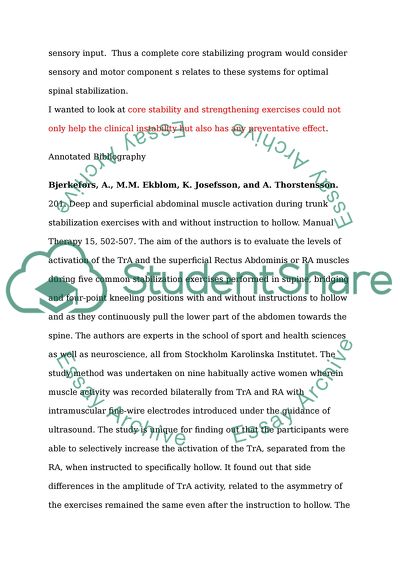Cite this document
(“Core stability and low back pain Annotated Bibliography”, n.d.)
Retrieved from https://studentshare.org/health-sciences-medicine/1423468-core-stability-and-low-back-pain
Retrieved from https://studentshare.org/health-sciences-medicine/1423468-core-stability-and-low-back-pain
(Core Stability and Low Back Pain Annotated Bibliography)
https://studentshare.org/health-sciences-medicine/1423468-core-stability-and-low-back-pain.
https://studentshare.org/health-sciences-medicine/1423468-core-stability-and-low-back-pain.
“Core Stability and Low Back Pain Annotated Bibliography”, n.d. https://studentshare.org/health-sciences-medicine/1423468-core-stability-and-low-back-pain.


